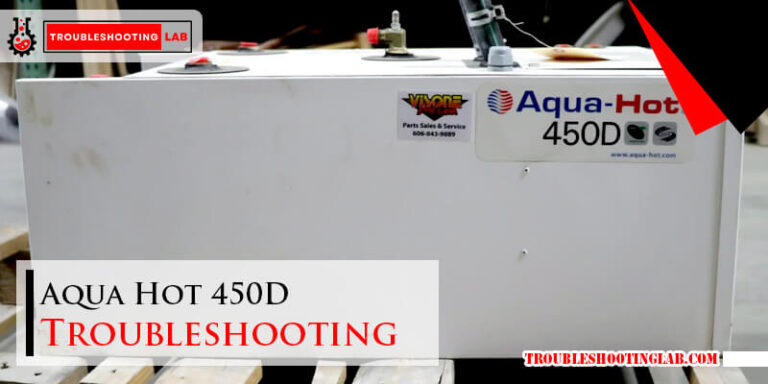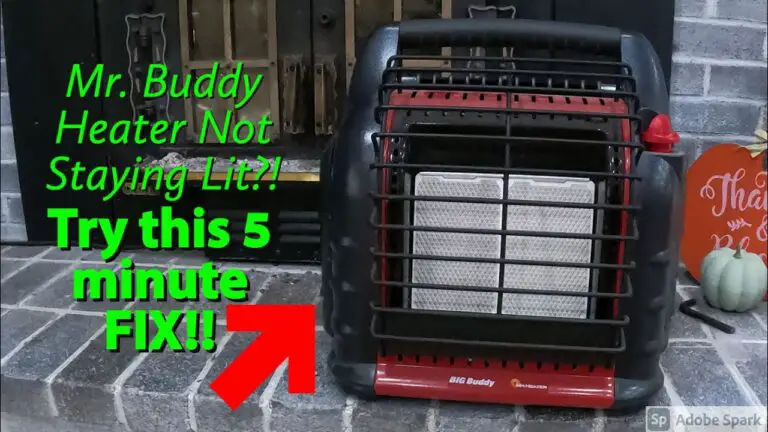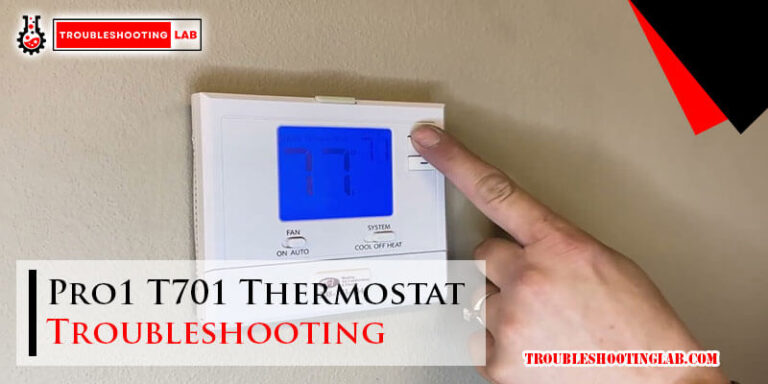Beckett Oil Burner Troubleshooting: Ultimate DIY Guide
Check the fuel supply and ensure the burner receives power for troubleshooting a Beckett oil burner. Replace the nozzle and clean the electrodes if needed.Beckett oil burners are essential for efficient heating systems. Proper troubleshooting ensures they operate smoothly, preventing costly repairs. Common issues include lack of fuel, electrical problems, or clogged nozzles. Regular maintenance and timely interventions can extend the lifespan of the burner.
Understanding the basic components and their functions helps in quick diagnosis and resolution of issues. Always follow the manufacturer’s guidelines for safety and efficiency. This approach not only saves time but also enhances the overall performance of the heating system.
Safety Precautions
Working with a Beckett oil burner requires attention to safety. Following proper safety measures can prevent accidents and injuries. This guide will highlight the key safety steps you need to take.
Essential Safety Gear
Before you start, equip yourself with the right safety gear. This is crucial for your protection. Here is a list of essential items:
- Safety goggles – Protect your eyes from debris and oil splashes.
- Gloves – Use insulated gloves to handle hot parts.
- Face mask – Prevent inhalation of harmful fumes.
- Fire extinguisher – Always have one nearby.
Common Hazards
Understanding common hazards helps you stay safe. Here are a few to watch out for:
| Hazard | Description |
|---|---|
| Electrical shock | Ensure the burner is unplugged before servicing. |
| Fire risk | Keep flammable materials away from the burner. |
| Oil spills | Clean spills immediately to prevent slips. |
| Burns | Allow the burner to cool before touching. |
Taking these safety precautions seriously is essential. Safety gear and hazard awareness can prevent many accidents. Always stay alert and prepared.

Basic Components Of A Beckett Oil Burner
The Beckett Oil Burner is known for its reliability and efficiency. Understanding its basic components is key to troubleshooting. This section breaks down the core parts of a Beckett Oil Burner.
Burner Assembly
The burner assembly is the heart of the oil burner. It includes:
- Burner Housing: Encases all the internal components.
- Air Tube: Directs the air to the flame.
- Nozzle: Sprays fuel into the combustion chamber.
- Electrodes: Ignite the fuel spray.
Control System
The control system manages the burner operations. Important components include:
- Primary Control: Manages the burner’s on/off cycle.
- Thermostat: Regulates temperature settings.
- Safety Controls: Ensures safe operation.
These parts work together to ensure the burner operates efficiently.
Fuel Supply
The fuel supply ensures the burner has enough oil. Key elements include:
- Oil Tank: Stores the fuel.
- Oil Filter: Cleans the fuel before use.
- Fuel Pump: Delivers fuel to the burner.
- Fuel Line: Connects the tank to the burner.
Maintaining these components is crucial for a steady fuel supply.
Common Issues And Symptoms
Beckett oil burners are known for their reliability. Sometimes, issues can arise. Recognizing these common issues and symptoms can help in troubleshooting.
Burner Fails To Start
A common issue is the burner failing to start. This can be due to:
- Power supply issues: Check the burner’s power source. Ensure the burner is plugged in.
- Thermostat settings: Ensure the thermostat is set correctly. The burner won’t start if set too low.
- Oil supply problems: Confirm there is enough oil. Low oil levels can prevent startup.
These checks can often resolve startup issues. If the burner still fails, professional help may be needed.
Noisy Operation
Another symptom is noisy operation. This can indicate:
- Air in the fuel line: Bleed the fuel line to remove air.
- Worn-out bearings: Bearings may need replacement.
- Loose components: Tighten any loose parts to reduce noise.
Addressing these causes can reduce or eliminate noise. A smooth operation is essential for the burner’s efficiency.
Smoke Or Soot Production
Smoke or soot can signal a problem. Common reasons include:
- Dirty burners: Clean the burners to remove soot.
- Improper air-to-fuel ratio: Adjust the ratio for optimal combustion.
- Clogged filters: Replace or clean filters regularly.
Maintaining a clean burner and proper ratios ensures cleaner operation. Regular maintenance can prevent these issues.
Diagnostic Tools
Effective troubleshooting of a Beckett Oil Burner requires the right diagnostic tools. These tools help identify and fix issues quickly. Below are three essential diagnostic tools for this task.
Multimeter
A multimeter is vital for checking electrical components. It measures voltage, current, and resistance. Use it to ensure safe and proper functioning of electrical parts.
- Voltage: Check if power supply is stable.
- Current: Ensure correct amperage in circuits.
- Resistance: Identify faulty wiring or components.
Proper use of a multimeter ensures your burner operates efficiently.
Pressure Gauge
A pressure gauge measures the pressure of oil flow. Consistent oil pressure is crucial for burner performance. Use it to check if the oil pump is working correctly.
- Oil Pressure: Maintain optimal burner operation.
- Flow Rate: Ensure correct fuel delivery.
- Leak Detection: Identify possible leaks in the system.
Regular checks with a pressure gauge help prevent burner failures.
Combustion Analyzer
A combustion analyzer checks the efficiency of the burner’s combustion process. It measures levels of gases like CO and O2. This tool ensures the burner is burning fuel efficiently.
- CO Levels: Ensure safety and reduce toxic emissions.
- O2 Levels: Optimize air-to-fuel ratio.
- Efficiency: Improve overall burner performance.
Using a combustion analyzer can improve safety and efficiency.
Step-by-step Troubleshooting
Troubleshooting a Beckett oil burner can be daunting. Follow this step-by-step guide to identify and fix common issues. This ensures your heating system runs smoothly.
Inspecting Electrical Connections
The first step is to inspect the electrical connections. Check all wires for any signs of wear or damage. Loose connections can cause the burner to malfunction.
- Turn off the power to the burner.
- Inspect the control box and all wiring.
- Tighten any loose connections.
- Replace any damaged wires.
Ensuring secure electrical connections helps the burner operate efficiently.
Checking Fuel Supply
Next, verify the fuel supply to the burner. A consistent fuel supply is crucial for proper operation.
- Check the fuel tank for adequate oil levels.
- Inspect the fuel lines for any leaks or blockages.
- Ensure the fuel filter is clean and not clogged.
A steady fuel supply ensures the burner performs well.
Testing Safety Controls
Lastly, test the safety controls. These controls prevent dangerous situations.
| Control | Check |
|---|---|
| Primary Control | Ensure the reset button is not tripped. |
| Limit Control | Verify the thermostat is set correctly. |
| Cad Cell Relay | Ensure it is clean and functioning. |
Regularly testing safety controls keeps your system safe and reliable.
Maintenance Tips
Regular maintenance keeps your Beckett Oil Burner running smoothly. It reduces the risk of breakdowns and ensures energy efficiency. Follow these tips for optimal performance.
Regular Cleaning
Clean the oil burner at least once a month. Remove soot and debris from the burner nozzle. Wipe down the burner motor and housing. Use a soft brush to clean the air intake vents.
- Turn off the power before cleaning
- Use a vacuum to remove loose dirt
- Ensure all parts are dry before reassembling
Annual Inspections
Schedule an annual inspection with a professional. This ensures all components are working well. A technician will check the fuel lines, nozzles, and filters.
- Book a professional service once a year
- Check for any signs of wear
- Ensure safety mechanisms are intact
Replacing Worn Parts
Replace worn parts immediately to avoid major issues. Common parts needing replacement include filters, nozzles, and belts. Always use genuine parts for best results.
| Part | Frequency | Notes |
|---|---|---|
| Filters | Every 6 months | Ensures clean fuel flow |
| Nozzles | Annually | Prevents clogging |
| Belts | As needed | Check for wear regularly |
When To Call A Professional
Beckett Oil Burners are reliable and efficient heating systems. But, they may face issues over time. Some problems are simple to fix. Others require professional help. Here is when you should call a professional for your Beckett Oil Burner.
Identifying Complex Issues
Some issues are hard to diagnose. These include:
- Repeated burner shutdowns
- Unusual noises
- Frequent cycling
- Soot buildup
These problems need expert knowledge and tools. Calling a professional saves time and ensures safety.
Understanding Warranty Limitations
Many Beckett Oil Burners come with a warranty. But, warranties have conditions. Understanding these is crucial.
Professional service may be required to keep the warranty valid. Unauthorized repairs might void the warranty. Review your warranty document for details.
| Issue | Professional Help Needed |
|---|---|
| Repeated shutdowns | Yes |
| Unusual noises | Yes |
| Frequent cycling | Yes |
| Soot buildup | Yes |
Calling a professional protects your investment. It ensures your Beckett Oil Burner runs smoothly.
Frequently Asked Questions
Why Is My Beckett Oil Burner Not Starting?
Check for power issues, thermostat settings, and oil supply. Ensure the emergency switch is on.
How Do I Reset A Beckett Oil Burner?
Press the red reset button on the burner’s control box. Wait 45 seconds before retrying.
What Causes A Beckett Oil Burner To Lockout?
Possible reasons include a clogged nozzle, dirty filter, or blocked air intake. Inspect and clean these components.
How Often Should I Service My Beckett Oil Burner?
Service annually to ensure optimal performance. Regular maintenance prevents issues and extends the burner’s lifespan.
Why Is My Beckett Oil Burner Smoking?
Smoking can be caused by a dirty nozzle, improper air adjustment, or clogged filter. Clean and adjust as needed.
Conclusion
Proper maintenance of your Beckett oil burner ensures efficient performance. Follow the troubleshooting tips outlined to avoid common issues. Regular checks and timely repairs save money and enhance safety. Keep your heating system in top shape for a warm and cozy home.





